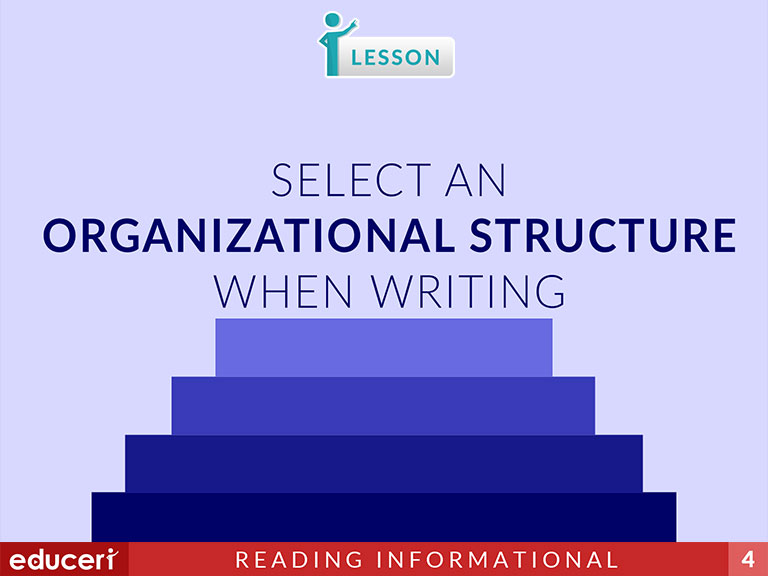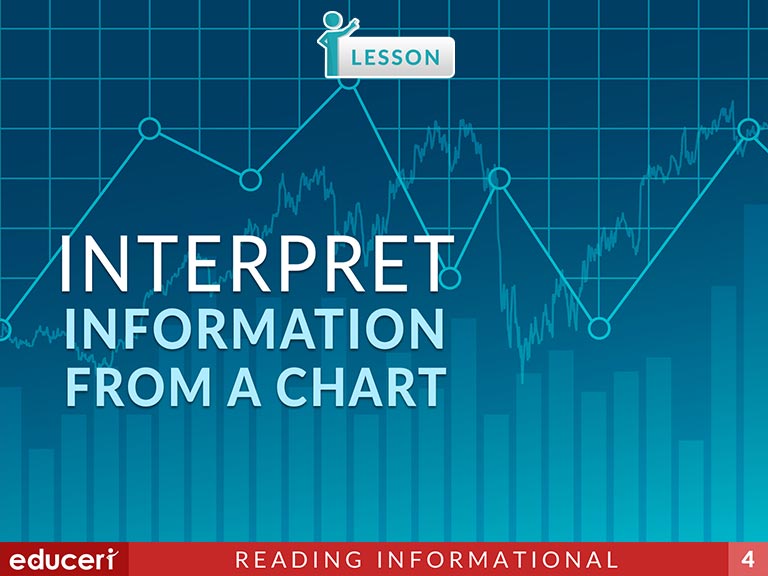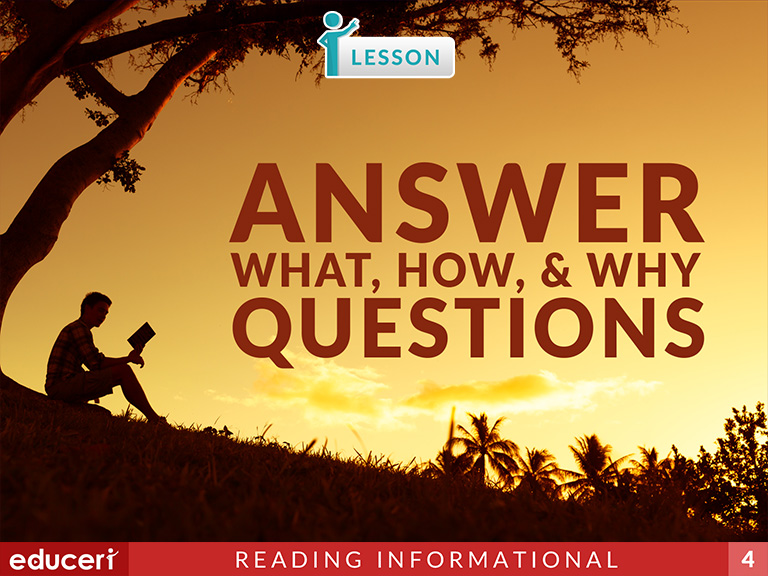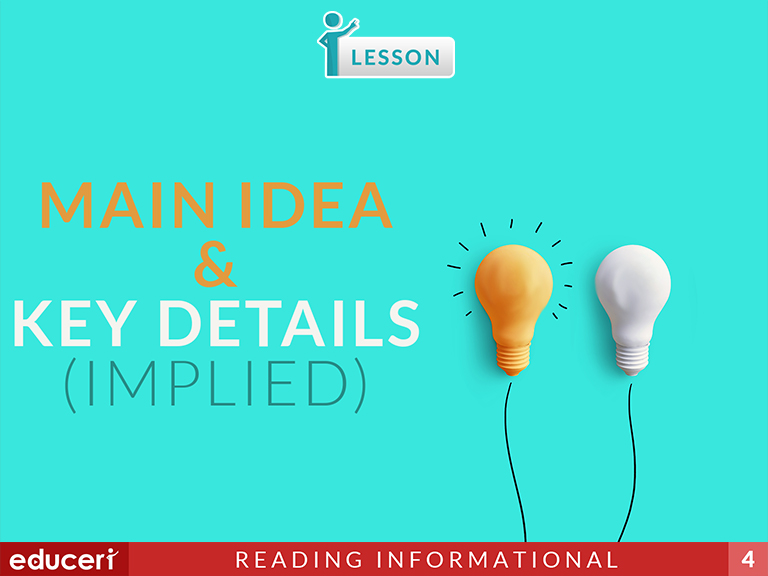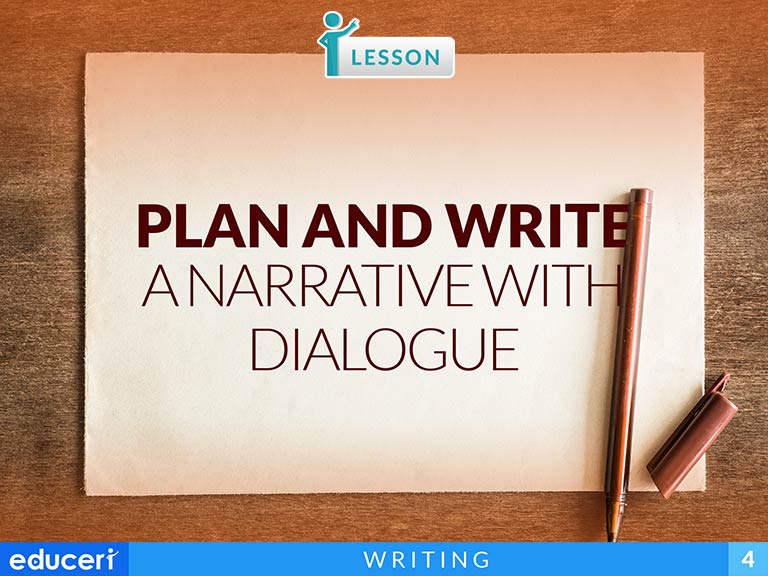All Lessons
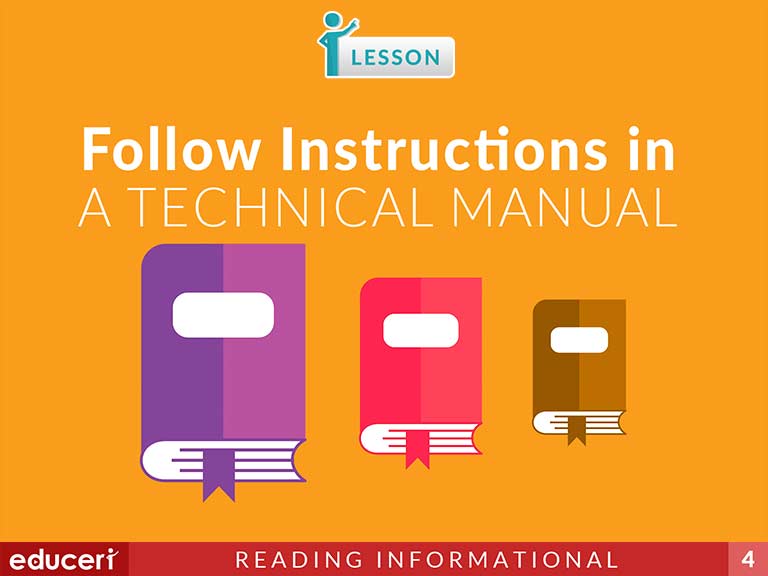
Follow Instructions in a Technical Manual
This reading comprehension lesson focuses on following instructions in a technical manual. The lesson includes research-based strategies and strategic questions that prepare students for assessments. In this lesson, students answer questions using the steps and information from different technical manuals. In addition to the lesson, there are five pages of Independent Practice and review with questions modeled after current adaptive testing items.
Share This Lesson
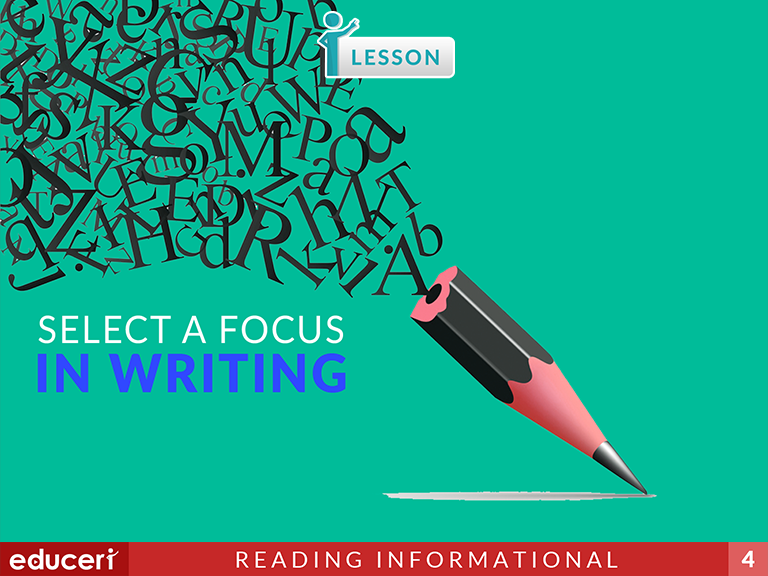
Select a Focus in Writing
This writing strategies lesson focuses on selecting a focus on writing. The lesson includes research-based strategies and strategic questions that prepare students for assessments. In addition to the lesson, there are five pages of Independent Practice and review with questions modeled after current adaptive testing items.
Share This Lesson
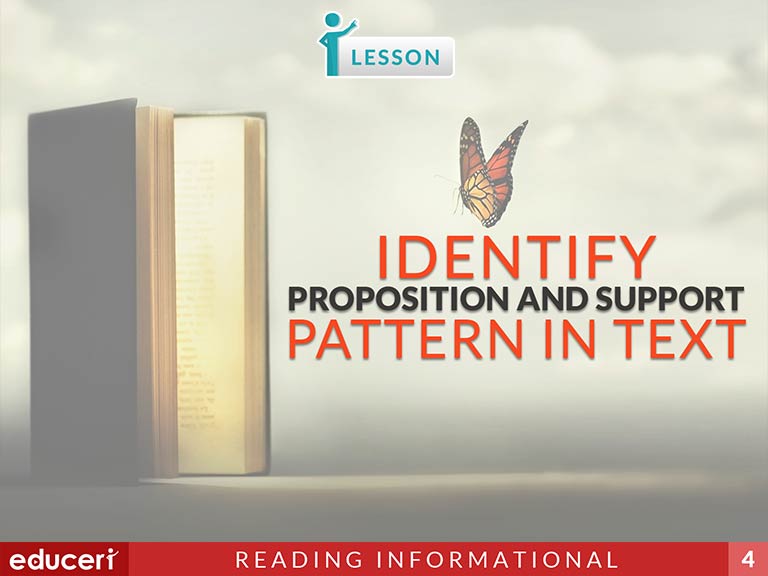
Identify Proposition and Support Patterns in Text
This reading comprehension lesson focuses on identifying the proposition-and-support pattern in the text. The lesson includes research-based strategies and strategic questions that prepare students for assessments. In this lesson, students read the text and identify the proposition of the author by identifying and details in the text. Then, they determine if the text uses proposition-and-support and defend their answers. In addition to the lesson, there are eight pages of Independent Practice and review with questions modeled after current adaptive testing items.
Share This Lesson
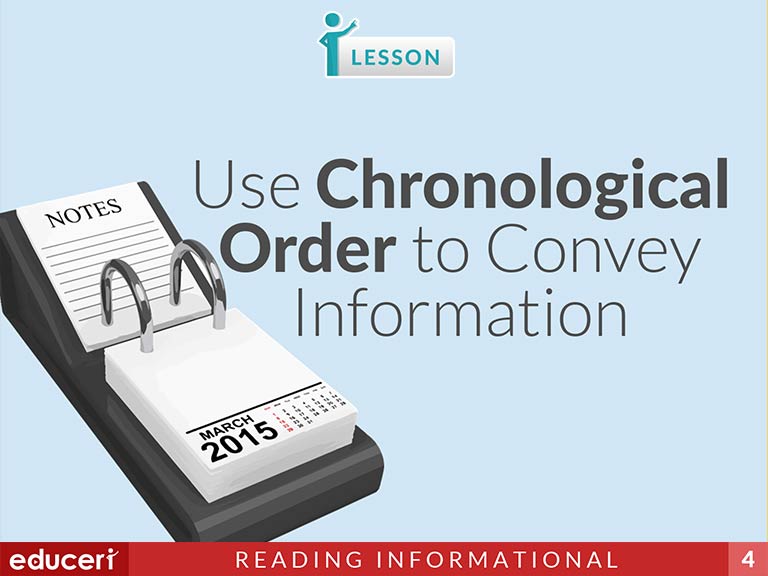
Use Chronological Order to Convey Information
This writing strategies lesson focuses on using chronological order to convey information. The lesson includes research-based strategies and strategic questions that prepare students for assessments. In this lesson, students put information in the correct chronological order and then write a paragraph to convey in information in chronological order. In addition to the lesson, there are four pages of Independent Practice and review with questions modeled after current adaptive testing items.
Share This Lesson

Distinguish Between Fact and Opinion
This reading comprehension lesson focuses on distinguishing between fact and opinion. The lesson includes research-based strategies and strategic questions that prepare students for assessments. In this lesson, students read a passage and label each sentence as fact or opinion. Students must defend their answers. In addition to the lesson, there are four pages of Independent Practice and review with questions modeled after current adaptive testing items.
Share This Lesson
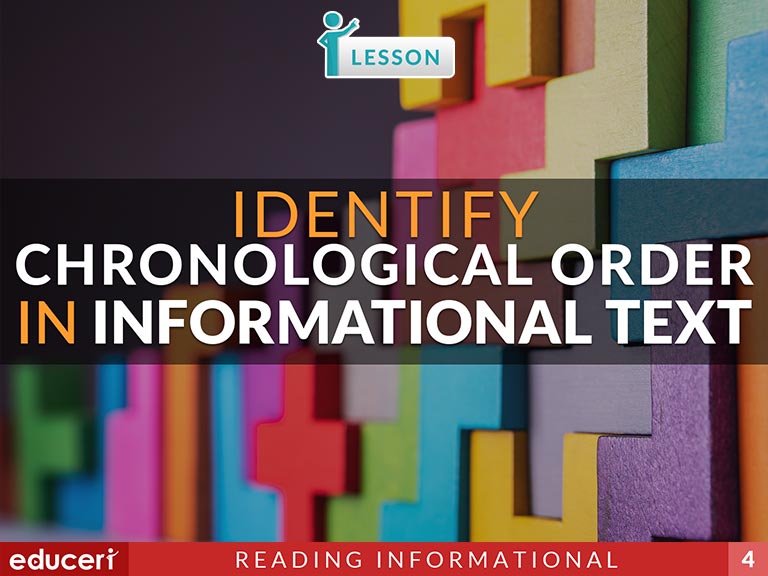
Identify Chronological Order in Informational Text
This reading comprehension lesson focuses on identifying chronological order in the informational text. The lesson includes research-based strategies and strategic questions that prepare students for assessments. In this lesson, students identify chronological clue words (months, days, years, time, age, etc.) and determine if the text is in chronological order. In addition to the lesson, there are four pages of Independent Practice and review with questions modeled after current adaptive testing items.
Share This Lesson
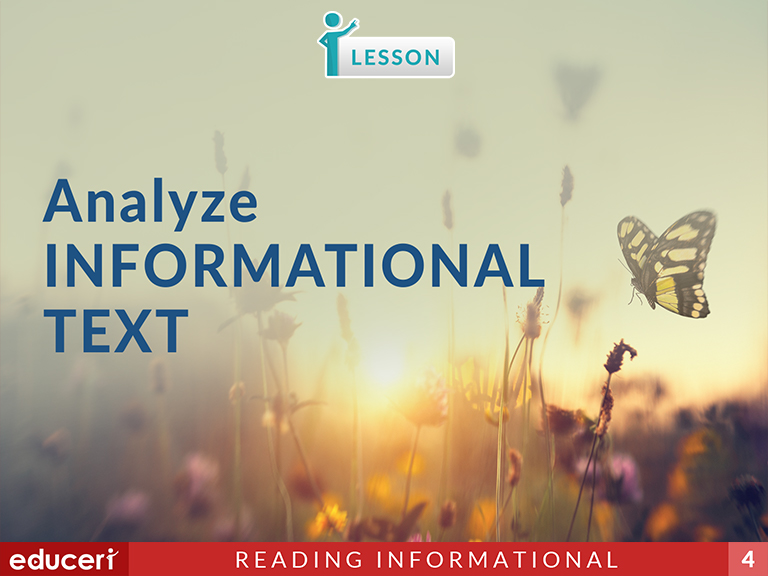
Analyze Informational Text
In this Reading Informational Text lesson, students are asked to interpret information from a passage and its related images, diagrams, and maps. Students must identify both the information and where it comes from. The lesson includes research-based strategies and strategic questions that prepare students for assessments.
Share This Lesson
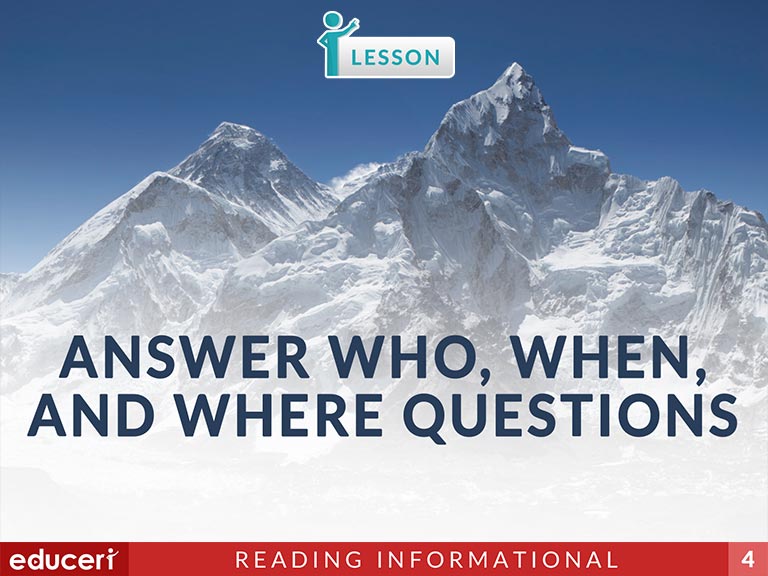
Answer Who, When, and Where Questions
This reading informational text lesson is designed as a part of our Link to Literacy English Language Development program. This description will be updated soon.
Share This Lesson
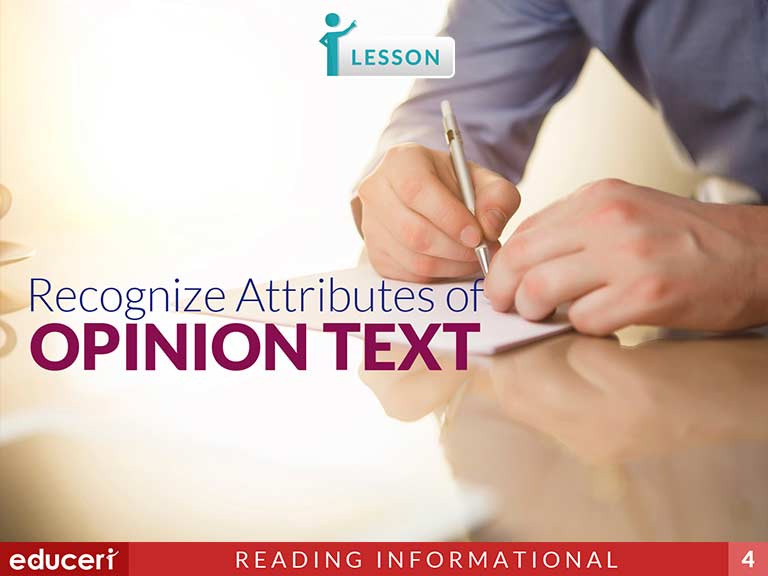
Recognize Attributes of Opinion Text
This reading informational text lesson has students identify the various attributes of opinion texts. Students will identify the writer's opinions, identify reasons for holding that opinion, and briefly summarize the text.
Share This Lesson
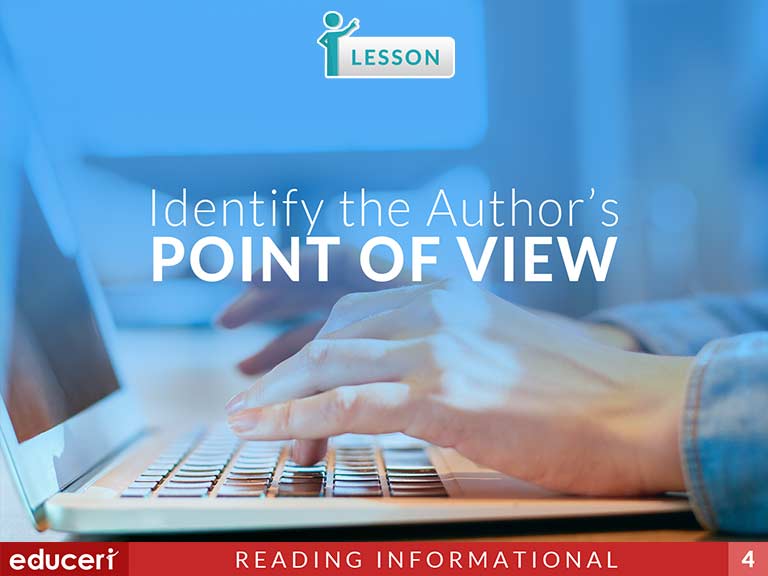
Identify the Author's Point of View
This reading informational text lesson has students identify the author's beliefs about the topic in a text.
Share This Lesson
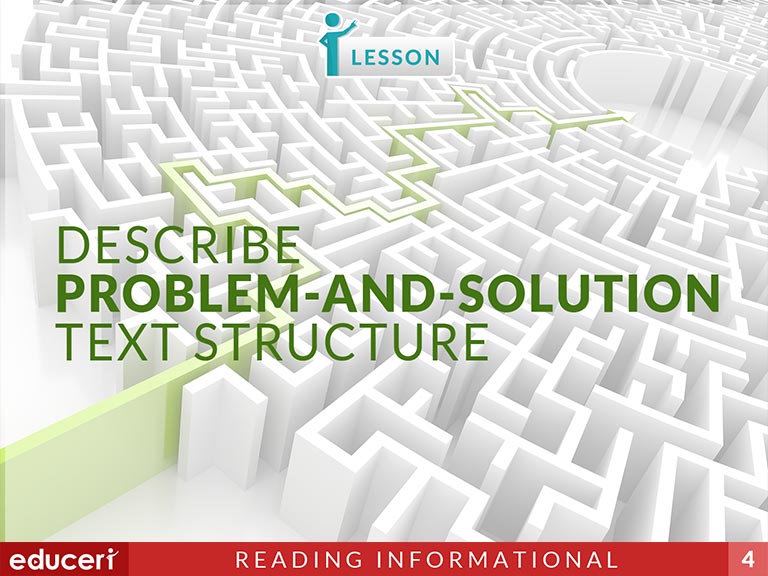
Describe Problem-and-Solution Text Structure
This Reading Informational lesson has students describe the problem-and-solution text structure.
Share This Lesson
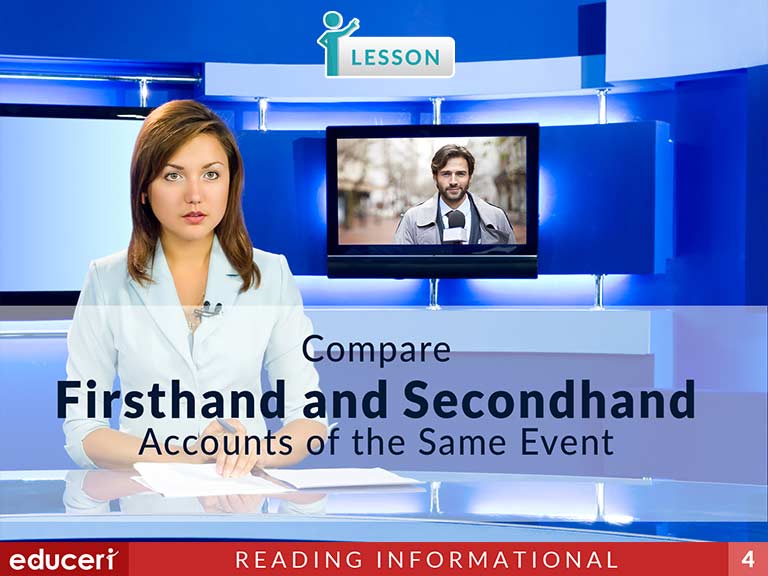
Compare Firsthand and Secondhand Accounts of the Same Event
This reading informational lesson has students compare different accounts of the same event. It includes a description of firsthand and secondhand accounts.
Share This Lesson
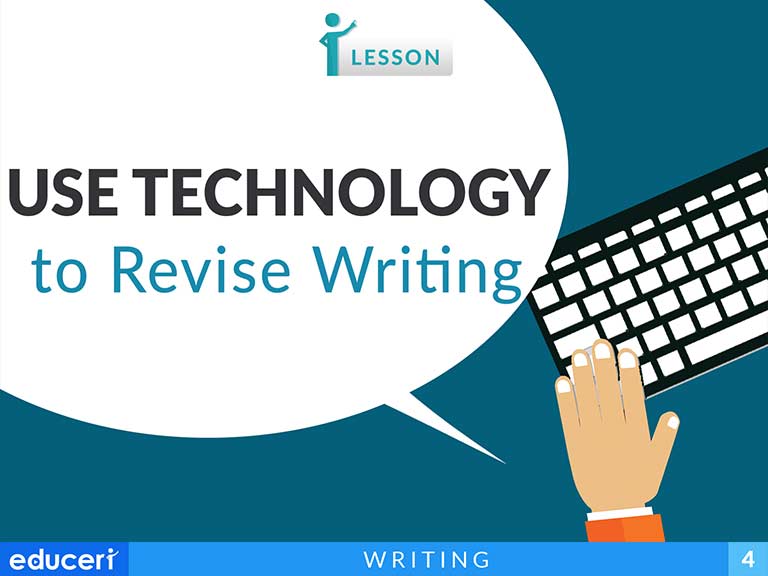
Use Technology to Revise Writing
This writing lesson requires students to revise their writing by deleting content that does not fit the topic of the text and adding content where elaboration is needed. The lesson includes research-based strategies and strategic questions that prepare students for assessments. In this lesson, students must select the best sentences to add and delete from multiple choices.
Share This Lesson
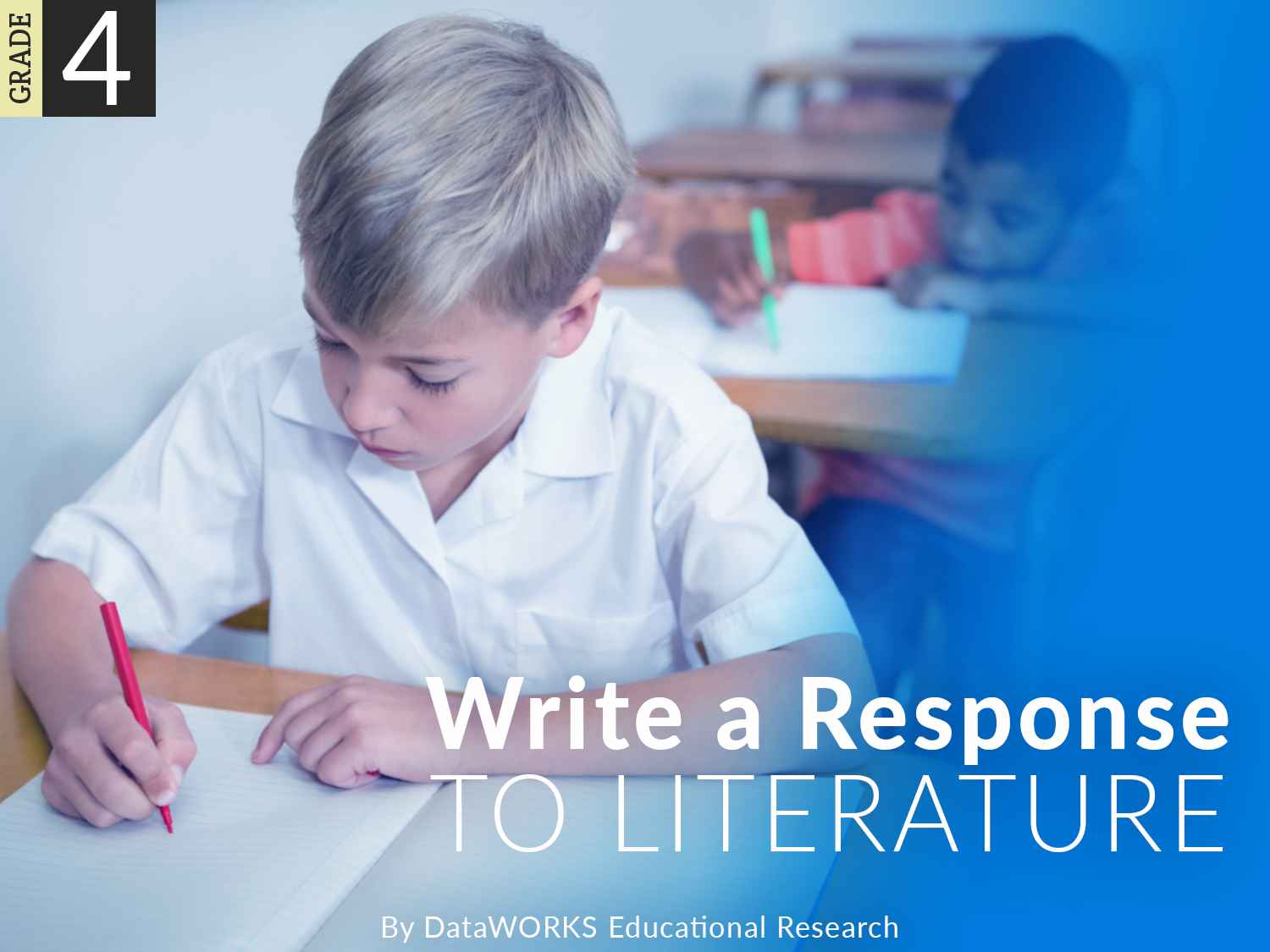
Write a Response to Literature
This writing applications lesson focuses on writing responses to literature. The lesson includes research-based strategies and strategic questions that prepare students for assessments. In this lesson, students are provided a prompt and reading passage. Students underline details in the passage that support the prompt then write a response that includes an intro, body, and conclusion. In addition to the lesson, there are three more of the same activity in Independent Practice and review with questions modeled after current adaptive testing items.
Share This Lesson
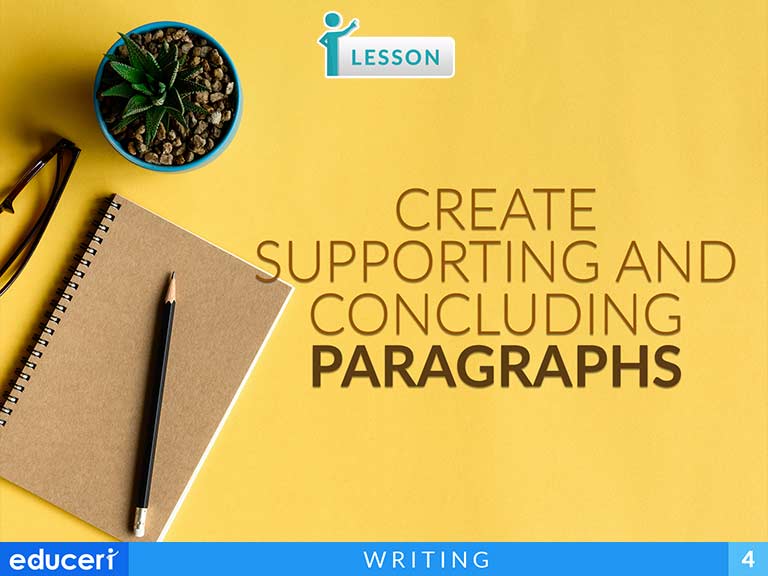
Create Supporting and Concluding Paragraphs
W.4.2 Write informative/explanatory texts to examine a topic and convey ideas and information clearly.
W.4.2.BW.4.2.B Develop the topic with facts, definitions, concrete details, quotations, or other information and examples related to the topic.
W.4.2.EW.4.2.E Provide a concluding statement or section related to the information or explanation presented.
This writing strategies lesson focuses on creating supporting and concluding paragraphs. The lesson includes research-based strategies and strategic questions that prepare students for assessments. In this lesson, students read an introductory paragraph and identify the main idea. Then, they identify supporting sentences and create a supporting paragraph for each one. Last, students write a concluding paragraph. In addition to the lesson, there are four pages of Independent Practice and review with questions modeled after current adaptive testing items.
